Jose Lezama
MaskSketch: Unpaired Structure-guided Masked Image Generation
Feb 10, 2023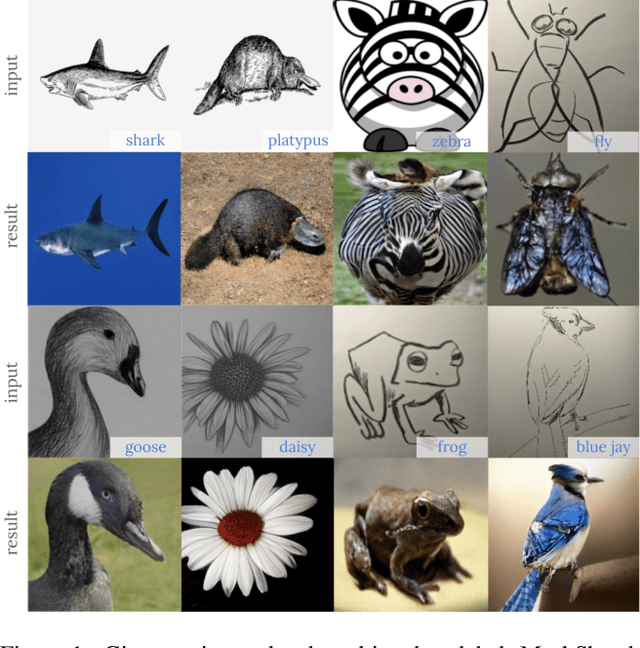
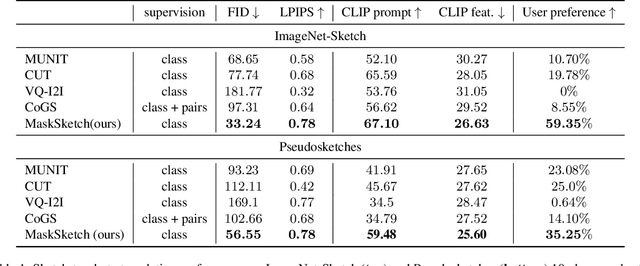
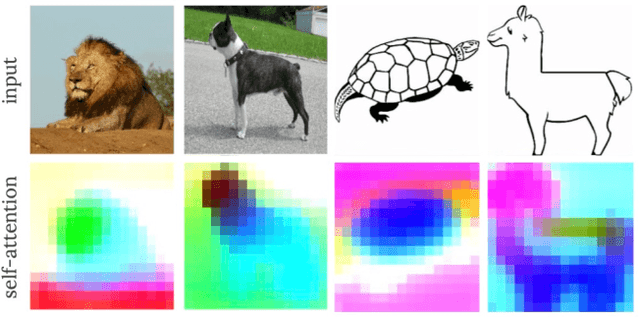
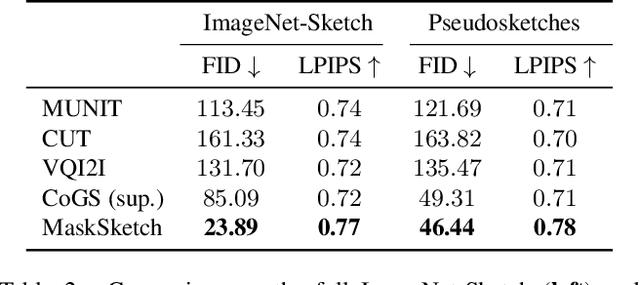
Abstract:Recent conditional image generation methods produce images of remarkable diversity, fidelity and realism. However, the majority of these methods allow conditioning only on labels or text prompts, which limits their level of control over the generation result. In this paper, we introduce MaskSketch, an image generation method that allows spatial conditioning of the generation result using a guiding sketch as an extra conditioning signal during sampling. MaskSketch utilizes a pre-trained masked generative transformer, requiring no model training or paired supervision, and works with input sketches of different levels of abstraction. We show that intermediate self-attention maps of a masked generative transformer encode important structural information of the input image, such as scene layout and object shape, and we propose a novel sampling method based on this observation to enable structure-guided generation. Our results show that MaskSketch achieves high image realism and fidelity to the guiding structure. Evaluated on standard benchmark datasets, MaskSketch outperforms state-of-the-art methods for sketch-to-image translation, as well as unpaired image-to-image translation approaches.
Muse: Text-To-Image Generation via Masked Generative Transformers
Jan 02, 2023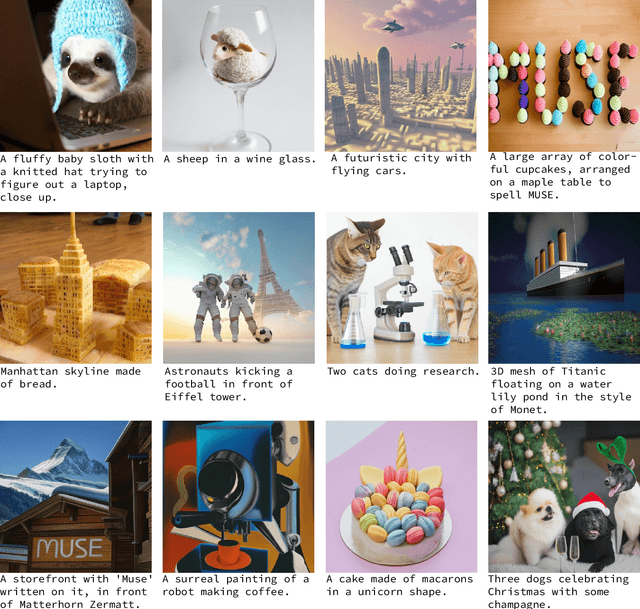

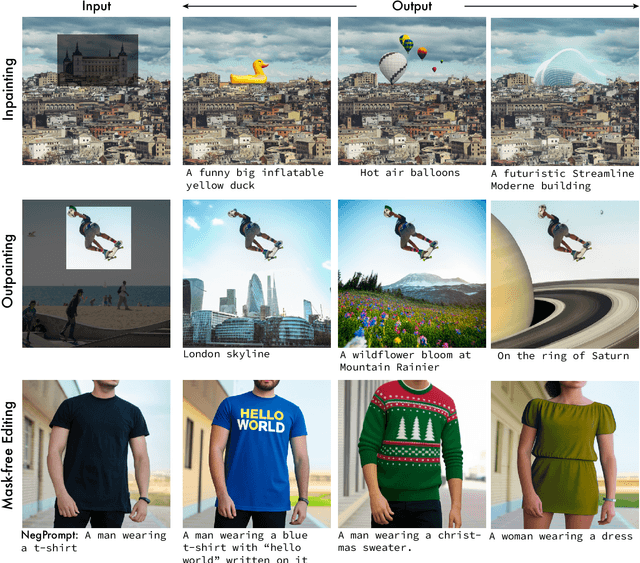
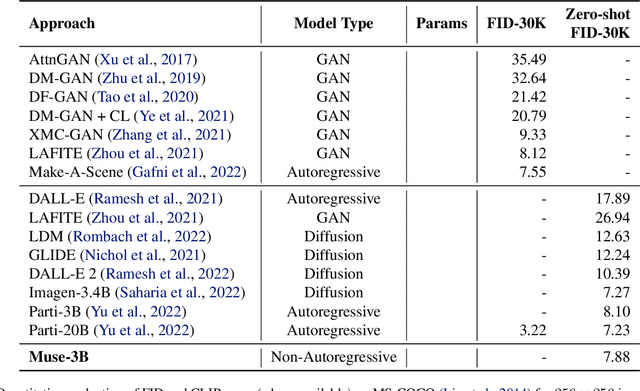
Abstract:We present Muse, a text-to-image Transformer model that achieves state-of-the-art image generation performance while being significantly more efficient than diffusion or autoregressive models. Muse is trained on a masked modeling task in discrete token space: given the text embedding extracted from a pre-trained large language model (LLM), Muse is trained to predict randomly masked image tokens. Compared to pixel-space diffusion models, such as Imagen and DALL-E 2, Muse is significantly more efficient due to the use of discrete tokens and requiring fewer sampling iterations; compared to autoregressive models, such as Parti, Muse is more efficient due to the use of parallel decoding. The use of a pre-trained LLM enables fine-grained language understanding, translating to high-fidelity image generation and the understanding of visual concepts such as objects, their spatial relationships, pose, cardinality etc. Our 900M parameter model achieves a new SOTA on CC3M, with an FID score of 6.06. The Muse 3B parameter model achieves an FID of 7.88 on zero-shot COCO evaluation, along with a CLIP score of 0.32. Muse also directly enables a number of image editing applications without the need to fine-tune or invert the model: inpainting, outpainting, and mask-free editing. More results are available at https://muse-model.github.io
ForestHash: Semantic Hashing With Shallow Random Forests and Tiny Convolutional Networks
Jul 28, 2018
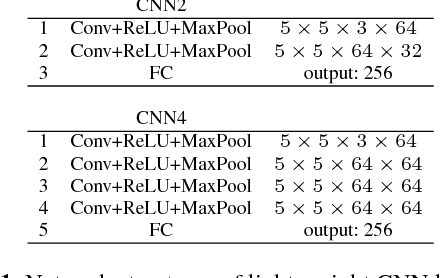

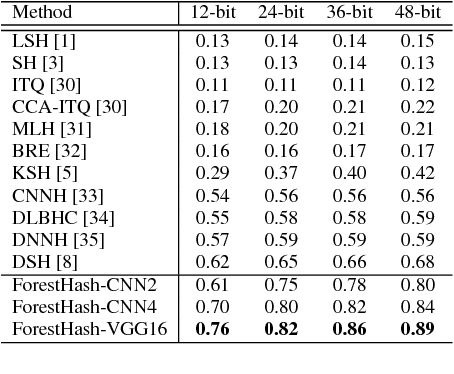
Abstract:Hash codes are efficient data representations for coping with the ever growing amounts of data. In this paper, we introduce a random forest semantic hashing scheme that embeds tiny convolutional neural networks (CNN) into shallow random forests, with near-optimal information-theoretic code aggregation among trees. We start with a simple hashing scheme, where random trees in a forest act as hashing functions by setting `1' for the visited tree leaf, and `0' for the rest. We show that traditional random forests fail to generate hashes that preserve the underlying similarity between the trees, rendering the random forests approach to hashing challenging. To address this, we propose to first randomly group arriving classes at each tree split node into two groups, obtaining a significantly simplified two-class classification problem, which can be handled using a light-weight CNN weak learner. Such random class grouping scheme enables code uniqueness by enforcing each class to share its code with different classes in different trees. A non-conventional low-rank loss is further adopted for the CNN weak learners to encourage code consistency by minimizing intra-class variations and maximizing inter-class distance for the two random class groups. Finally, we introduce an information-theoretic approach for aggregating codes of individual trees into a single hash code, producing a near-optimal unique hash for each class. The proposed approach significantly outperforms state-of-the-art hashing methods for image retrieval tasks on large-scale public datasets, while performing at the level of other state-of-the-art image classification techniques while utilizing a more compact and efficient scalable representation. This work proposes a principled and robust procedure to train and deploy in parallel an ensemble of light-weight CNNs, instead of simply going deeper.
Not Afraid of the Dark: NIR-VIS Face Recognition via Cross-spectral Hallucination and Low-rank Embedding
Nov 21, 2016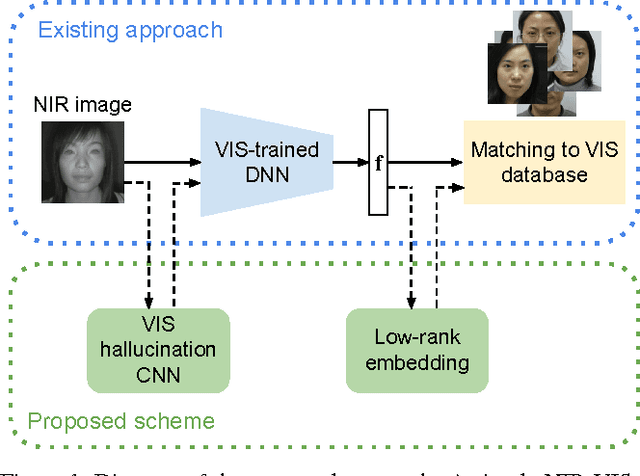
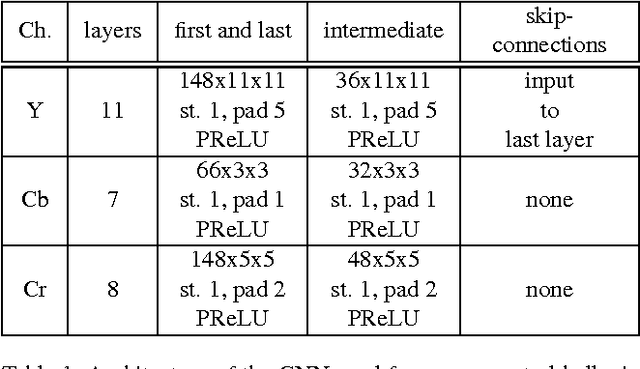
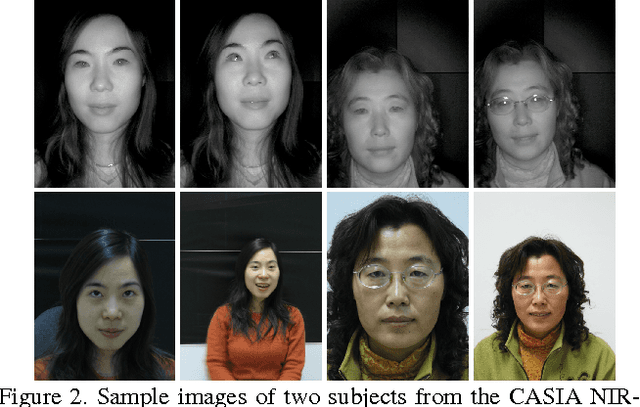
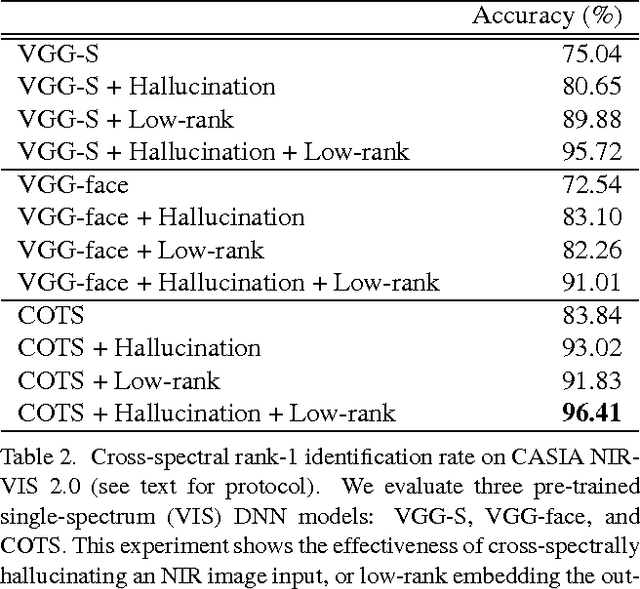
Abstract:Surveillance cameras today often capture NIR (near infrared) images in low-light environments. However, most face datasets accessible for training and verification are only collected in the VIS (visible light) spectrum. It remains a challenging problem to match NIR to VIS face images due to the different light spectrum. Recently, breakthroughs have been made for VIS face recognition by applying deep learning on a huge amount of labeled VIS face samples. The same deep learning approach cannot be simply applied to NIR face recognition for two main reasons: First, much limited NIR face images are available for training compared to the VIS spectrum. Second, face galleries to be matched are mostly available only in the VIS spectrum. In this paper, we propose an approach to extend the deep learning breakthrough for VIS face recognition to the NIR spectrum, without retraining the underlying deep models that see only VIS faces. Our approach consists of two core components, cross-spectral hallucination and low-rank embedding, to optimize respectively input and output of a VIS deep model for cross-spectral face recognition. Cross-spectral hallucination produces VIS faces from NIR images through a deep learning approach. Low-rank embedding restores a low-rank structure for faces deep features across both NIR and VIS spectrum. We observe that it is often equally effective to perform hallucination to input NIR images or low-rank embedding to output deep features for a VIS deep model for cross-spectral recognition. When hallucination and low-rank embedding are deployed together, we observe significant further improvement; we obtain state-of-the-art accuracy on the CASIA NIR-VIS v2.0 benchmark, without the need at all to re-train the recognition system.
 Add to Chrome
Add to Chrome Add to Firefox
Add to Firefox Add to Edge
Add to Edge